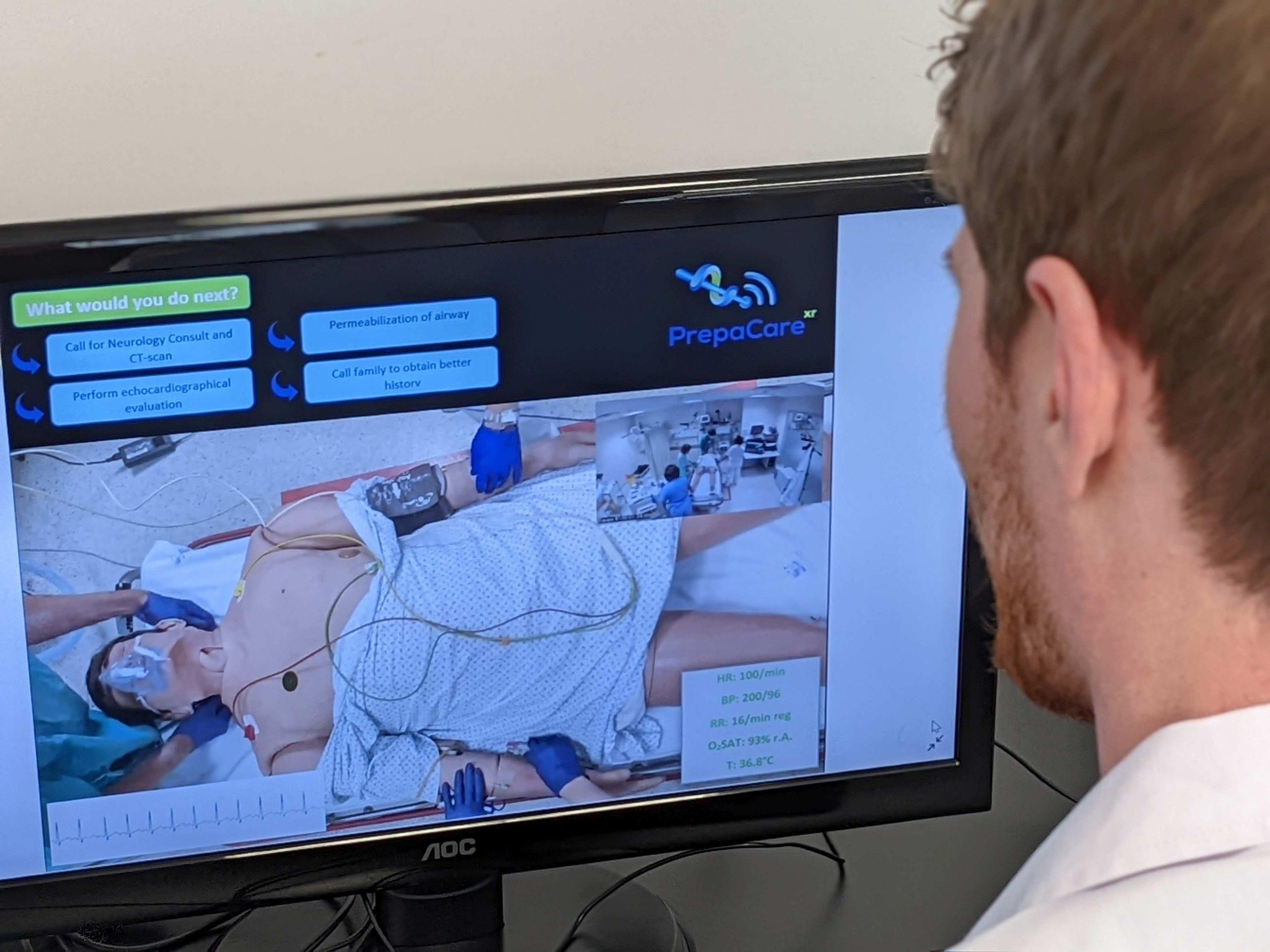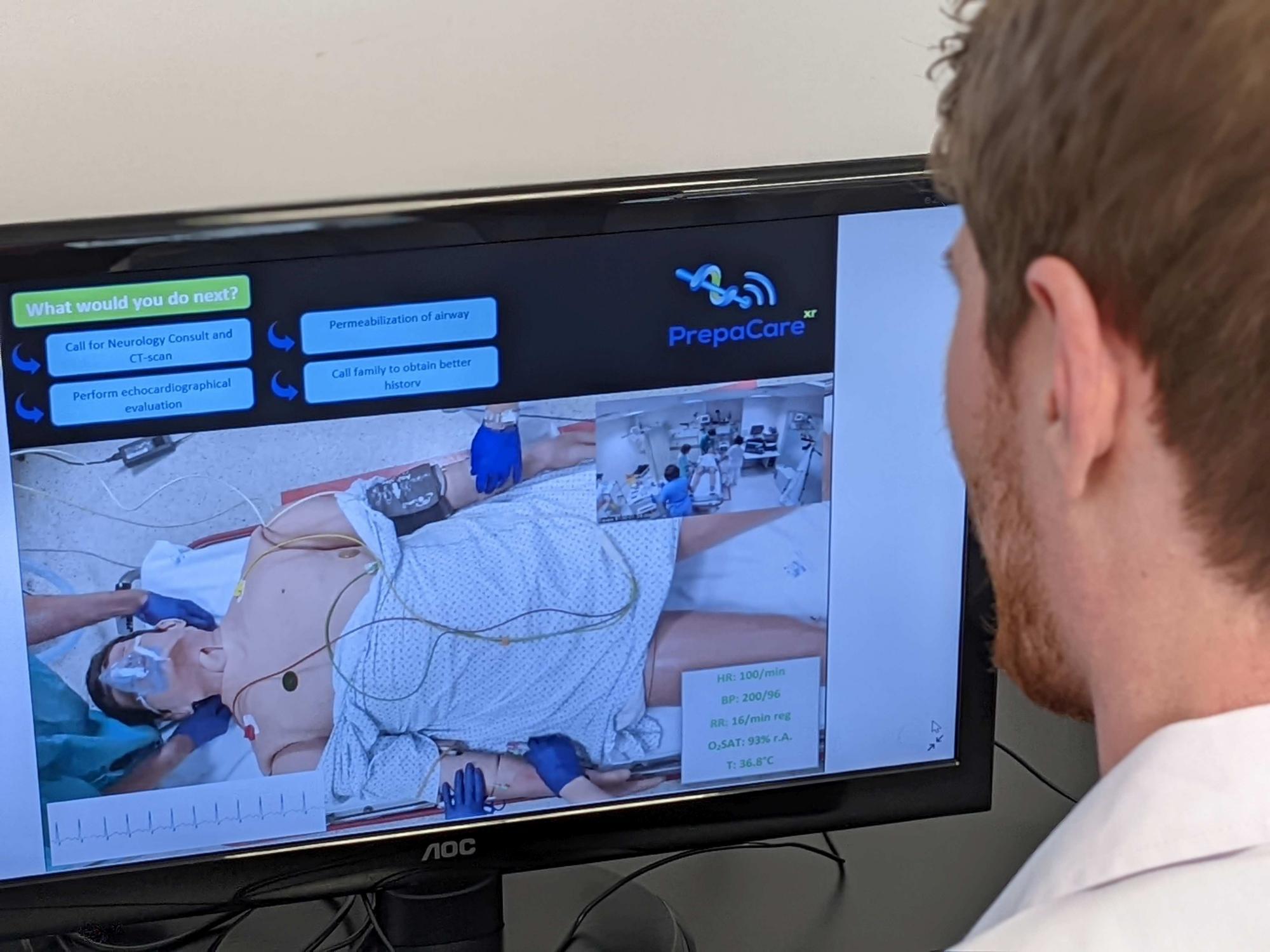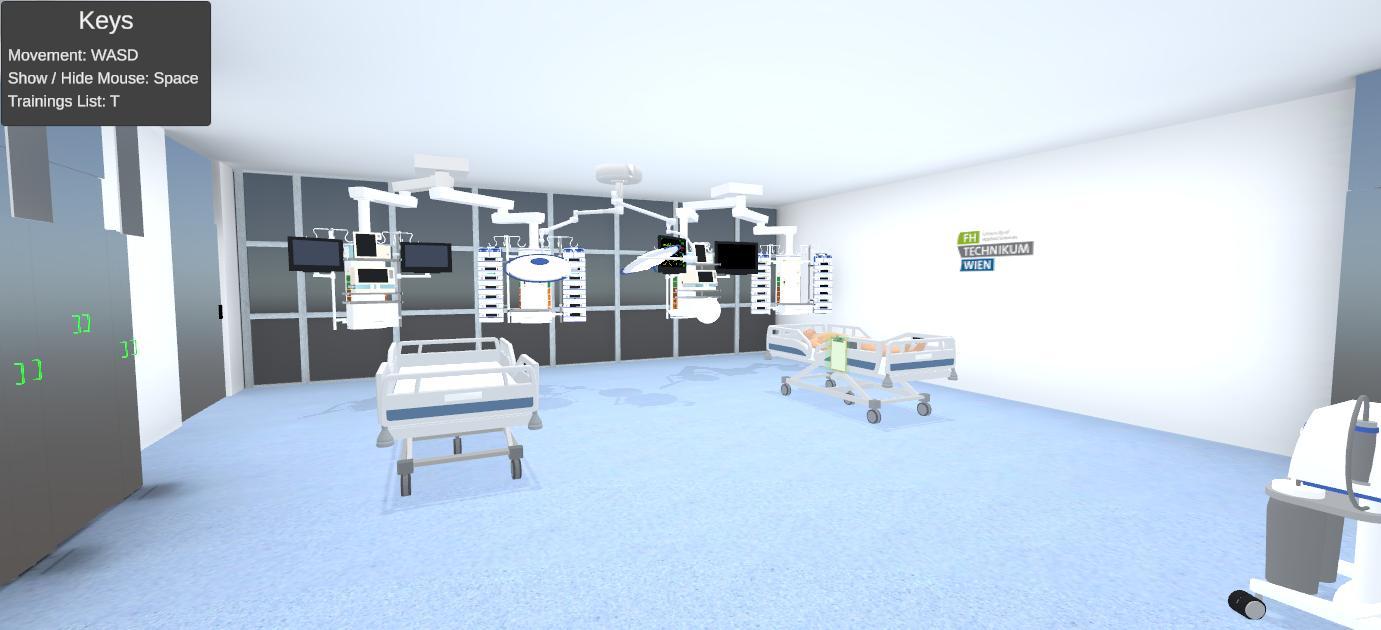VR Technology and Interactive Videos: Project Develops Innovative Teaching and Training Concepts for Healthcare Professions

08 March, 2022
In the PrepaCare (XR) project, a team of experts at UAS Technikum Wien is working with four international partner institutions to develop simulation-based teaching and training concepts for the healthcare sector. Among other things, web-based training tools and virtual reality technology are being used.
Well-trained health workers play a central role in any health system, especially nowadays. For this purpose, a profound education, a lot of practice and further training have the highest priority. This applies not only to the frequently mentioned health professions such as doctors or nurses, but also to related professions such as medical technicians.
To support this areas, experts at UAS Technikum Wien are developing new, simulation-based teaching and training methods together with four international partner institutions in the Erasmus+ funded project PrepaCare (XR). “Further education and training of healthcare staff is a potential key to success, especially for situations that occur rarely but are critical,” explains project leader Andrea Balz from the Competence Centre Medical Engineering & Integrated Healthcare. It is well known that time and staff are often scarce in health care facilities. In order to save valuable resources in the further training of staff, especially in hospitals, the project focuses on the latest methods of knowledge transfer: Teaching and learning concepts, for example, are prepared in e-learning courses (Moodle) and supplemented with best-practice examples. Interactive videos and VR technology, among other things, are used to simulate particularly critical scenarios. “We want to use this to support continuing education in the medical field at a wide variety of levels and with different methods, and in this way help to close knowledge gaps,” says project manager Balz.
International cooperation of five institutions
The University of Applied Sciences Technikum Wien is working with the international partners Lapland University of Applied Science (LAPIN AMK) from Finland, the University of Bergamo (UniBg) from Italy, the Universidade de Trás-os-Montes e Alto Douro (UTAD) and the Centro Hospitalar Trás-os-Montes e Alto Douro (CHTMAD), both from Portugal. In addition to country-specific experience – also in light of the different healthcare systems – each of the participating institutions contributes a certain specialization and dedicates a work package to a subarea of the project. UAS Technikum Wien is involved, among other things, in the development of the various teaching and training concepts and has the project lead.
Virtual reality and web-based training tools
“In order to be able to train rare but critical use cases, various learning scenarios are being developed as part of the project,” explains Andrea Balz. The first such learning scenario is specifically designed for emergency room staff and deals with the clinical processes to be applied in the course of complex airway management (obstruction of the airway). The participants have to select and implement the correct treatment steps in the simulation. The corresponding training was created in three different technical variants: In order to consolidate the theoretical content, an online e-learning training solution was developed. In addition, participants can practice different treatment paths in an interactive video and receive immediate feedback on them via the web-based training tool. As the most recent approach, a virtual reality (VR) application has also been developed, with the help of which communication processes in particular are to be practiced and consolidated in team mode. In the course of the project, further such treatment and simulation scenarios are to be designed and implemented.
You can download press images here.
Photo 1: Different treatment paths can be practiced in an interactive video – the web-based training tool provides immediate feedback.
Photo 2: VR technology, among other things, is used to simulate particularly critical scenarios.
Credits: UAS Technikum Wien

